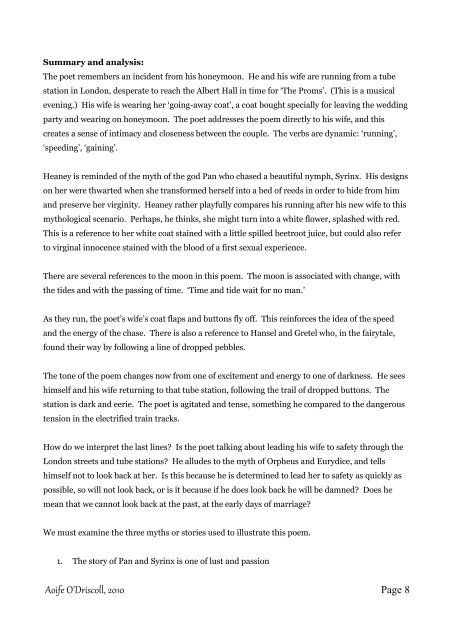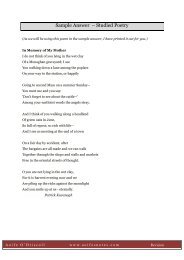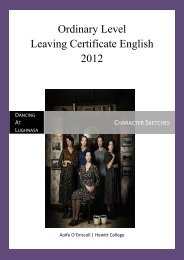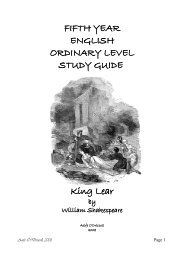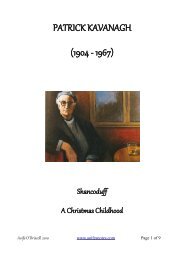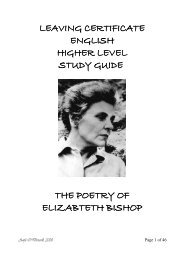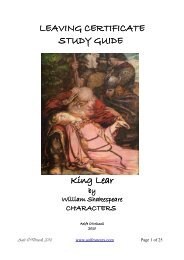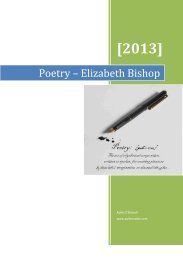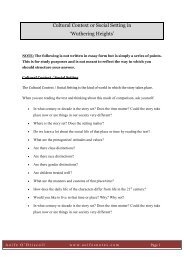Heaney .pdf - Aoife's Notes
Heaney .pdf - Aoife's Notes
Heaney .pdf - Aoife's Notes
Create successful ePaper yourself
Turn your PDF publications into a flip-book with our unique Google optimized e-Paper software.
Summary and analysis:<br />
The poet remembers an incident from his honeymoon. He and his wife are running from a tube<br />
station in London, desperate to reach the Albert Hall in time for ‘The Proms’. (This is a musical<br />
evening.) His wife is wearing her ‘going-away coat’, a coat bought specially for leaving the wedding<br />
party and wearing on honeymoon. The poet addresses the poem directly to his wife, and this<br />
creates a sense of intimacy and closeness between the couple. The verbs are dynamic: ‘running’,<br />
‘speeding’, ‘gaining’.<br />
<strong>Heaney</strong> is reminded of the myth of the god Pan who chased a beautiful nymph, Syrinx. His designs<br />
on her were thwarted when she transformed herself into a bed of reeds in order to hide from him<br />
and preserve her virginity. <strong>Heaney</strong> rather playfully compares his running after his new wife to this<br />
mythological scenario. Perhaps, he thinks, she might turn into a white flower, splashed with red.<br />
This is a reference to her white coat stained with a little spilled beetroot juice, but could also refer<br />
to virginal innocence stained with the blood of a first sexual experience.<br />
There are several references to the moon in this poem. The moon is associated with change, with<br />
the tides and with the passing of time. ‘Time and tide wait for no man.’<br />
As they run, the poet’s wife’s coat flaps and buttons fly off. This reinforces the idea of the speed<br />
and the energy of the chase. There is also a reference to Hansel and Gretel who, in the fairytale,<br />
found their way by following a line of dropped pebbles.<br />
The tone of the poem changes now from one of excitement and energy to one of darkness. He sees<br />
himself and his wife returning to that tube station, following the trail of dropped buttons. The<br />
station is dark and eerie. The poet is agitated and tense, something he compared to the dangerous<br />
tension in the electrified train tracks.<br />
How do we interpret the last lines? Is the poet talking about leading his wife to safety through the<br />
London streets and tube stations? He alludes to the myth of Orpheus and Eurydice, and tells<br />
himself not to look back at her. Is this because he is determined to lead her to safety as quickly as<br />
possible, so will not look back, or is it because if he does look back he will be damned? Does he<br />
mean that we cannot look back at the past, at the early days of marriage?<br />
We must examine the three myths or stories used to illustrate this poem.<br />
1. The story of Pan and Syrinx is one of lust and passion<br />
Aoife O'Driscoll, 2010 Page 8


